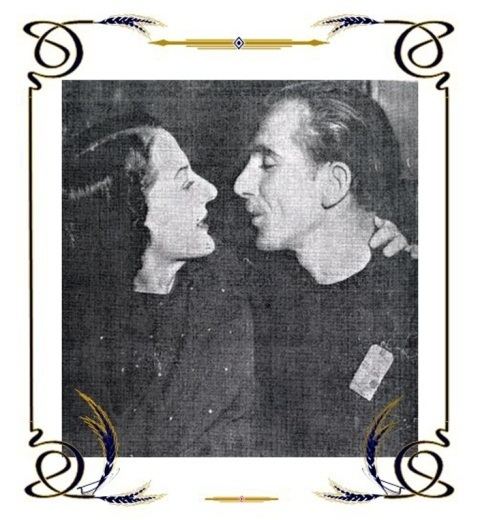Date 11 September 1951 | ||
 | ||
Freedom Train (in Czech: Vlak svobody) is the term commonly used in the Czech Republic to describe the mass escape of opponents of the Czechoslovak communist regime across the West German border on 11 September 1951 involving State Railways train No. 3717.
Contents
At a time when divisions between the Communist-dominated Eastern bloc and the countries of Western Europe were consolidating, the diversion of the train across the heavily policed border between Czechoslovakia and the American-occupied zone of Germany is considered one of the most significant mass escapes from a communist country to the West. The success of the enterprise was acclaimed around the world and led the communist authorities to tighten the Iron Curtain. The incident also led to removal of the railroad tracks at abandoned Czech border crossings to prevent similar incidents.
Background
The hijacking of the train was organized by train driver Jaroslav Konvalinka, train dispatcher Karel Truksa, Jaroslav Švec, a physician, and Karel Ruml, who later described his experience in the book Z deníku vlaku svobody (From the Diary of the Freedom Train).
Karel Ruml had been active in the anti-communist resistance movement since 1949. As a member of the right-wing organization Všehrd, he was expelled from his studies at the Faculty of Law of the Charles University in Prague and, soon after, he joined a group smuggling secret documents from the Soviet Union to a French intelligence agency. In late 1949 he met an old friend in Nymburk in Central Bohemia. During their conversation, they were arrested by the StB (Czechoslovak State Security Service). Ruml's friend, Vlasta "Bůňa" Krejčí, was subsequently sentenced to life imprisonment. Ruml himself was released without further consequences. The incident and the growing atmosphere of fear and repression by the state apparatus gradually strengthened his intention to leave Czechoslovakia. In 1951, his girlfriend told him about a planned illegal border crossing by train. The chief organizer was her uncle František Šilhart, a former editor of the magazine Americké Listy (American Letters). Šilhart decided to stay in Czechoslovakia and continue illegal anti-state activities. His son Vladimír travelled on the train instead. Karel Ruml only joined up with the other hijackers the train, where he was contacted by Truksa.
The hijacking
The express train to Cheb set off from Prague at 9:55 on 11 September 1951, pulled by steam locomotive No. 365.011. The train divided at Cheb at 14:12, with three carriages proceeding onward to Aš as passenger train No. 3717.
After the train arrived at Hazlov (the station before the train's destination in Aš), the driver deliberately delayed it by 4 minutes. Under cover of carrying out an inspection of the carriage brakes, he inactivated the emergency brakes. Dr Švec boarded at Hazlov with the task of watching and signalling whether the track at Aš had been switched in the direction of the West German border, which happened irregularly.
Shortly before 15:00, the train began to approach Aš. Švec signalled that the line had been switched to the track leading to the German border. After entering the station slowly the train picked up speed again and passed through the station without stopping. The great majority of the 111 passengers on board were totally unaware of the hijackers' plans and started to panic. Most of them were students at the gymnasium high school in Cheb and patients at the spa in Františkovy Lázně; more than 70 subsequently returned to Czechoslovakia. Several members of the State Security and Veřejná bezpečnost (state police) were travelling on board and tried to gain access to the emergency hand brakes installed on all the carriages. However, these were guarded by armed hijackers.
The train sped on until it crashed through a barrier placed across the track at the border with West Germany and carried on for another kilometer before coming to a halt. The police officers immediately jumped off the train and began running back towards the Czechoslovak border. The organizers of the escape wanted to continue until the train was further away from the border. However the driver was unwilling to take the risk, since he was unfamiliar with local track conditions. The train stopped at the border post No. 30. The organizers explained to the shocked passengers that the action had been planned in advance. While they were discussing whether to stay or go back to the Czechoslovakia, a jeep approached from the German direction. The train was instructed by German customs officers and U.S. soldiers to proceed on to the nearby railway station at Selb-Plössberg.
Afterwards
In Selb, the train was met by a number of reporters and journalists. Karel Ruml, who was the only English speaking person among the hijackers, received an offer (along with Truksa and Konvalinka) from the Americans to undertake a US tour talking about their unusual escape. Ruml asked them to conceal his identity in order to protect family members still in Czechoslovakia. After a month, the group of hijackers and their families (who had left the country with them) moved to Canada, where they received the residence visas. Their case was widely publicized by the Western media, including The New York Times, The Globe and Mail and The Los Angeles Times.
Ruml, Konvalinka and Truksa later moved to the United States to live, Vladimír Šilhart went to Great Britain.
In response, the Communist regime in Czechoslovakia organized trials of the people involved in the incident and other groups collaborating in anti-state activities. The first nine defendants were sentenced to 162 years in prison. František Šilhart was sentenced to death. However, his sentence was commuted to life imprisonment and he was released in the 1960s. The actress Jiřina Štěpničková was among the 171 suspects interrogated in association with the case. She was sentenced to 15 years in prison.
